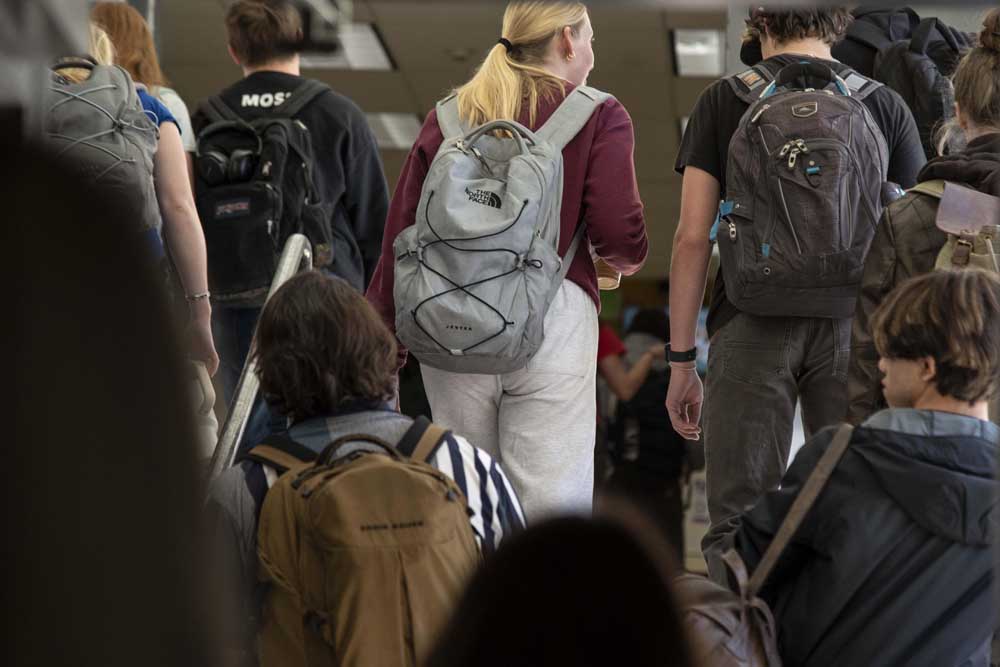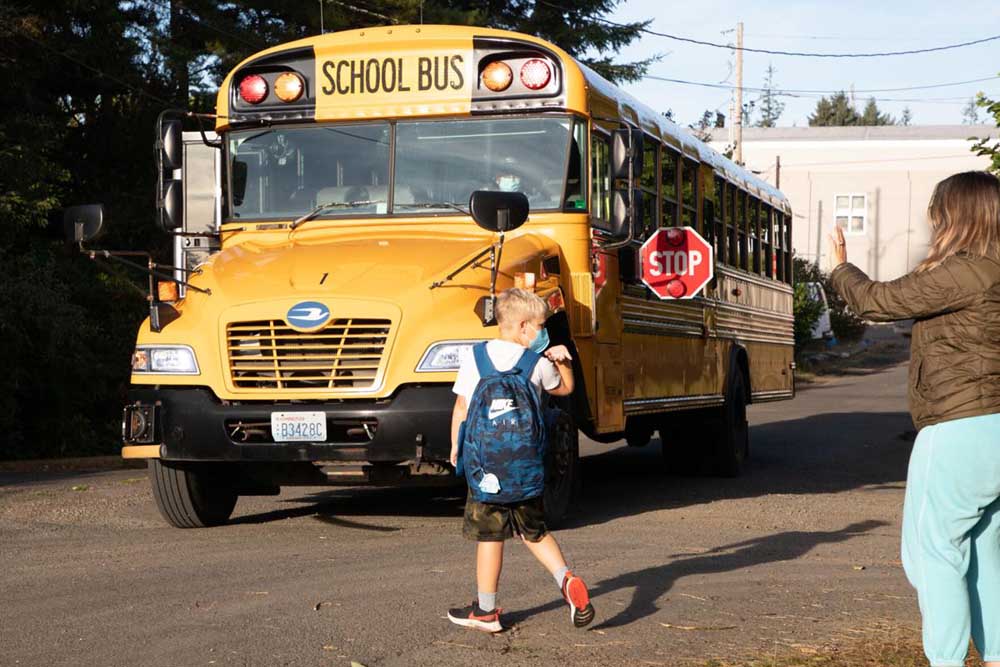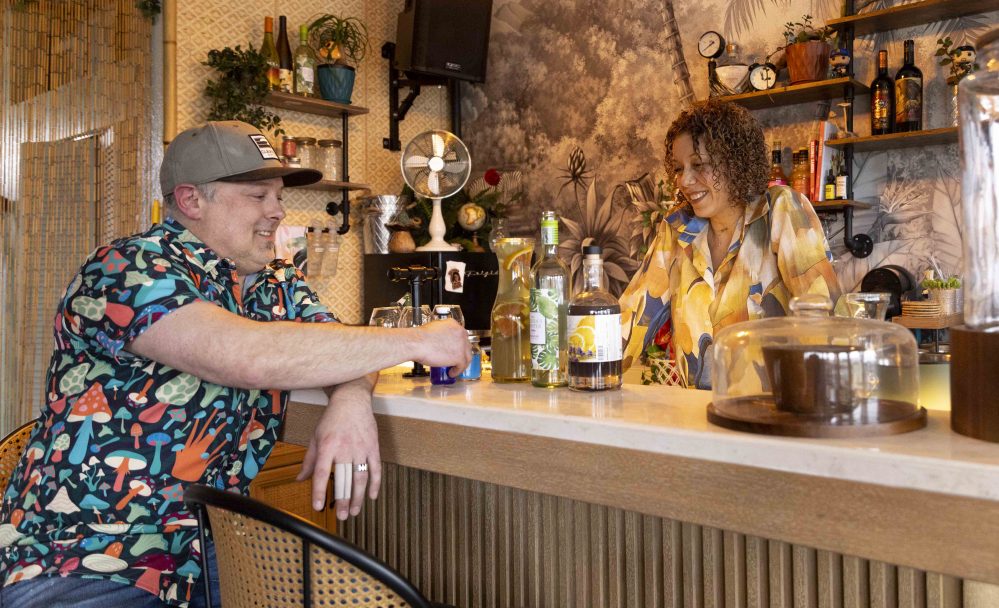Oceanview Charter School strives for acceptance
Published 4:00 pm Thursday, March 1, 2012
Thomas and Donna Freeland walk through Clatsop Community Colleges Performing Arts Center, pointing out where they want to put classrooms, study nooks, a cafeteria, a staff lounge and everything else to serve a small school of about 100 students. Upstairs in the cavernous auditorium, they talk of the opportunities for plays, lectures, assemblies and graduation. Next door at the Josie Peper building, they imagine their administrative offices and staff meeting areas.
The Freelands see a community space and much more a small, ninth- to 12th-grade public charter school to serve students dissatisfied with traditional high school.
Were after the kids who need more help, says Thomas Freeland. If theyve been kicked out of school, we want them. The problem often revolves around their personal life. We need to show them we care.
Planning a charter school for up to six years now, theyve created a local group of supporters and drafted a more than 200-page charter application under consideration by Astoria School District.
The Freelands, their board of directors and their consultants will answer questions and testify on the charters merits at a March 14 Astoria School Board meeting.
The school board, after a thorough review of the charter by staff, faculty and the school board, will make a decision at its April 11 meeting whether to sponsor Oceanview.
Approval means the grassroots effort can start negotiating to lease the PAC for three years, register as a school and continue moving toward a possible opening either this or next fall. Disapproval means reworking the charter, resubmitting and possibly approaching the state for sponsorship.
Starting a charter school becomes a lifestyle
The Freelands, previously of Arizona, moved to the North Coast in June 2010 with the express goal to start Oceanview, seeing no other charter schools in Clatsop or Tillamook counties. Both are originally from the Pacific Northwest.
Donna Freeland, the would-be principal of the school, plans to finish her two-year dissertation and graduate with a doctorate in educational administration from Argosy University in Phoenix, Ariz., by October. Shes taught at the University of Hawaii, substituted in various schools around Clatsop County and currently teaches psychology as an adjunct at CCC. She was also director of special education at the charter school Prima Vera in Chandler, Ariz.
Thomas Freeland, who will manage the schools finances, is closing in on his bachelors in business administration from a Caplan University online program. He was a commercial building inspector and has a varied background in working with youths.
The two say their school is open to anybody, but is trying to service students with additional needs that traditional schools struggle to provide.
They will initially hire about four administrative staff including themselves part time and four or five nonunionized teachers.
Since we have so few teachers, theyll have to wear a lot of hats, said Donna Freeland.
They contracted with Charter Starters Inc., which has helped more than 50 other groups trying to start charter schools in Oregon, to help create the charter application they submitted late last year to Superintendent Craig Hoppes.
Youre better able to cater the educational experience to the student than the district, said Lou Favreau, a co-founder of the Eugene-based consulting firm. Were not taking students away; its putting the money in another pocket for the district. Its part of the district.
The main challenges of starting a charter school, Favreau adds, are getting over biases against what amounts to a more private school operation model, finding a suitable location and securing continual funding. The charter school would get 95 percent as much as Astoria School District, which would get the remaining 5 percent for its part in the charters operations.
The Freelands financed the schools planning with their own money and reimbursements through the $55,000 Charter School Incentive Grant from the Oregon Department of Education. Theyve already used $30,000 researching similar schools around the state, creating the charter application and assembling a local base of support.
They now have a governing body formed of local residents. Thomas Freeland said the school also has 120 letters of support from around the county and about 15 letters of intent to attend the school will take a maximum 100 students before entering applicants into a lottery.
In October, the Freelands secured a letter of intent from CCC to negotiate a lease of the PAC?if Oceanview gets sponsored. JoAnn Zahn, vice president of finance and operations for the college, says there are still issues with the location such as zoning requirements, and Oceanview would have to pay for any move-in costs.
The Upward Bound and Talent Search programs and other community courses currently use the bottom of the PAC and the Josie Peper Building. Those programs would have to relocate to the main campus if Oceanview secured a lease.
The community will also take some more convincing.
Oceanview hopes to work with community
Partners of the PAC spokeswoman Janet Bowler said, Weve been reassured by the college that the PAC will still be available on the weekends and the evenings. Partners of the PAC?is a coalition of music, dance and radio groups recently created to sustain it as an affordable center for arts and educational events.
The Freelands say they support all the community groups using the PAC and would like to explore community partnerships for their students. They also say the charter school, by leasing the PAC,?can help keep the college from having to sell it.
There are also concerns about Oceanviews effect on the high school.
Its a perception of whos taking what, says Margaret Bates, a charter school specialist with ODE. A charter school is looking at high school students who are not successful in the traditional high school.
Principal Larry Lockett at AHS recently commented that the traditional high school only works for 70 percent of students, part of the reason for Gray Alternative High School, in its fourth year and emulating some facets of a charter school.
My concern is after looking at the charter, it looks a lot like the charter for Columbia Academy, which evolved into Gray School, Lockett says.
Columbia Academy was a short-lived charter school around 2003 operated by the district that Lockett says was a victim of district budget cuts and consolidation. As long as Oceanview doesnt try to duplicate Gray School, says Lockett, hes willing to support it.
Donna Freeland says one unique aspect of her school is the more than 40 special training regimens she has developed for teachers working with students with a wide variety of special needs. Every student will also have an individual transition planner to keep track of where they want to go after high school, whether that is college, a vocational program or directly into the workforce.
Oceanview has also made partnerships with five or six local businesses to offer working internships.
Meanwhile, the school must conform to all state standards, perform audits with the district and seek renewal after its first five-year charter expires.
Funding remains
a hurdle
Oceanviews planning money comes from the 2010 round of charter school funding ODE was awarded from the U.S. Department of Education. The federal government still owes Oregon about $6.5 million of that previously awarded grant money, meaning there might not be any implementation grants even if the school gets sponsorship. After failing to secure charter grant funding in the 2011 round, ODEs busy applying for another round of funding this year and could hear back on the effort by the end of July.





